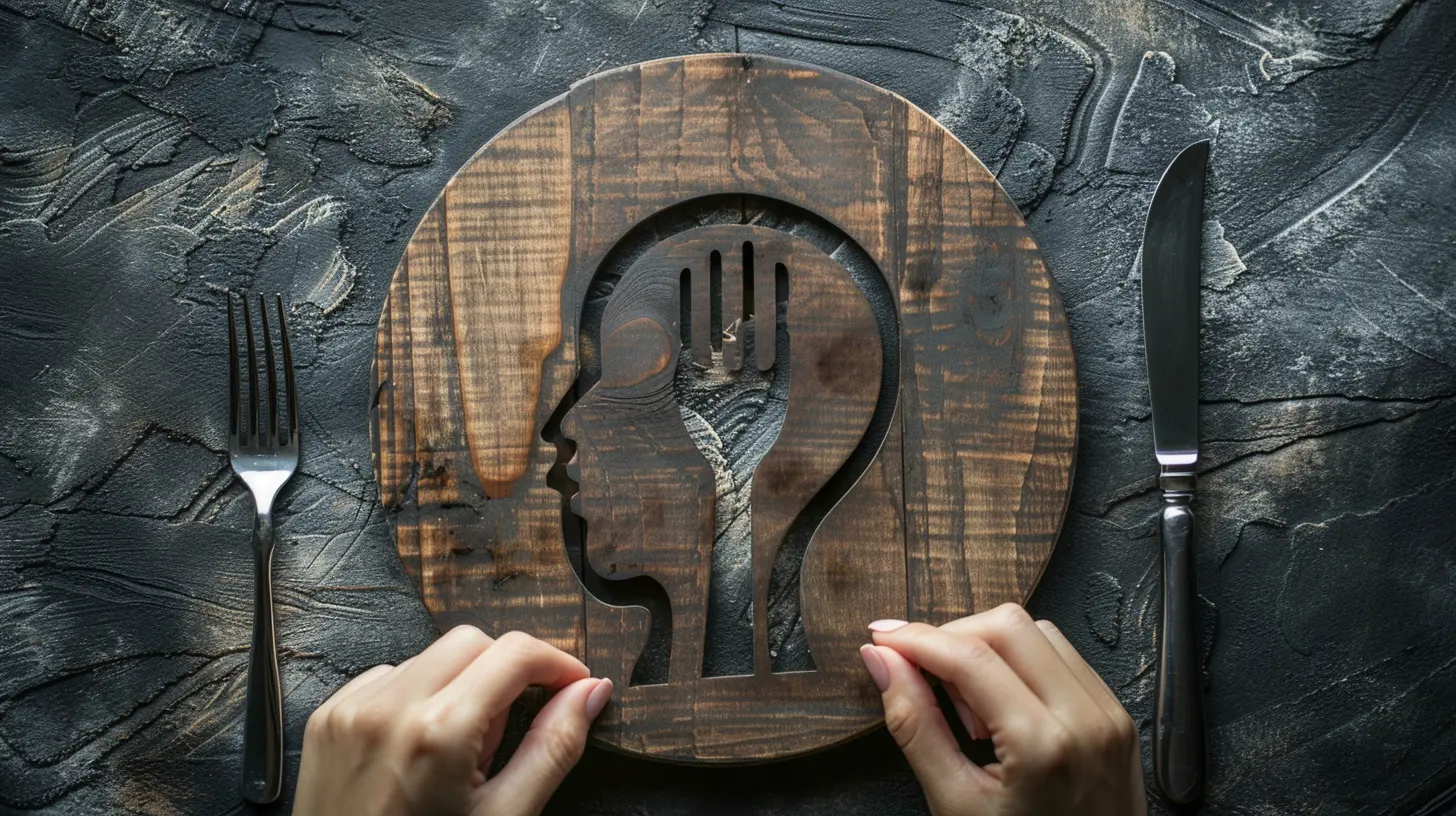Why Cognitive Behavioral Therapy Is Effective for Eating Disorders
14 June 2025
Battling an eating disorder can feel like you're stuck in a never-ending loop—you tell yourself to stop, to eat better, to stop obsessing over food or the scale... but every day feels like Groundhog Day. If that sounds familiar, you're not alone. But here's the good news: Cognitive Behavioral Therapy (CBT) has been a complete game-changer for many people facing these exact struggles.
You might be wondering, “What makes CBT so effective for eating disorders?” Sit back, breathe, and let’s break it all down. This article is your go-to guide to understanding why this therapy works and how it can help you—or someone you love—break free from the clutches of disordered eating.
What Is Cognitive Behavioral Therapy (CBT) Anyway?
Let’s start with the basics. Think of CBT as mental spring cleaning. It’s a structured, goal-oriented type of psychotherapy that focuses on identifying and changing unhelpful thoughts and behaviors.The core idea behind CBT is pretty straightforward: Our thoughts influence our feelings, and our feelings influence our behaviors. So if you can change how you think, you can change how you feel and ultimately how you act.
Now apply that to eating disorders. If someone constantly thinks, “I’m not worthy unless I look a certain way,” or “Eating that piece of cake makes me a failure,” those beliefs can drive self-destructive behaviors. CBT helps break that toxic cycle.
Understanding Eating Disorders: More Than Just About Food
You might think eating disorders are all about food, weight, or willpower. But that’s a huge oversimplification.Disorders like anorexia, bulimia, and binge eating disorder are often rooted in deep emotional pain, low self-esteem, anxiety, and sometimes trauma. Food is just the symptom; the real issue lies beneath the surface.
Think of it like an iceberg. What you see on the outside—restricting food, overeating, purging—is only a small piece. CBT dives below the waterline to tackle the underlying thoughts and emotions fueling the disorder.
Why CBT Works So Well for Eating Disorders
1. It Puts You in the Driver’s Seat
One of the most empowering parts of CBT is that it teaches people to become their own therapist.You learn tools and techniques you can use in everyday situations. Triggers don’t just disappear after a few therapy sessions, but with CBT, you’ll know how to respond when they show up. You're no longer at the mercy of intrusive thoughts or compulsive behaviors.
2. It Breaks the Thought-Behavior Loop
Eating disorders often follow a specific loop:> Negative Thought → Negative Feeling → Harmful Behavior → Temporary Relief → Guilt → Start Again
CBT helps you pause and interrupt this pattern. For example, if someone thinks, “I feel fat today,” CBT challenges that thought. Is it truly logical? Where is it coming from? What’s the emotion behind it?
When you start questioning and reframing those thoughts, the feelings and behaviors that follow begin to shift too.
3. Proven, Evidence-Based Method
This isn’t some trendy self-help idea or wellness fad. CBT is backed by decades of solid research. Clinical studies have consistently shown that CBT is one of the most effective treatments for various eating disorders. It's often the gold standard, especially for bulimia nervosa and binge eating disorder.And when a treatment has science on its side, that’s always comforting.
4. It’s Tailored to the Individual
No two people are the same, and CBT gets that.It’s not a cookie-cutter approach. Therapists work with each individual to understand their unique thought patterns, triggers, and challenges. Whether someone is struggling with emotional eating, obsessive calorie counting, or body dysmorphia, CBT can be customized to address what’s most relevant to them.
5. Addresses the ‘Why’ Behind the Behavior
One thing CBT is really good at? Digging deep.It’s not just about stopping binge-eating episodes or avoiding purging behaviors. CBT looks at the “why.” Why do you feel out of control around food? Why do you restrict yourself all day just to binge at night?
Understanding the root cause gives you the power to heal from the inside out.
Key CBT Techniques Used in Treating Eating Disorders
Now let’s get into the nitty-gritty. How does CBT actually work in real life? Here are some of the most common and effective techniques used in CBT for eating disorders:1. Cognitive Restructuring
This is the heart of CBT. It involves identifying distorted thoughts (like “I must be thin to be loved”) and replacing them with more balanced, realistic ones (like “My worth isn’t defined by my appearance”).It's kind of like updating the software in your brain—out with the bugs, in with better programming.
2. Food and Thought Journaling
Tracking what you eat isn't about counting calories—it’s about noticing patterns.You log meals, moods, thoughts, and triggers. Over time, these journals can highlight what sends you into a spiral and help you build better coping mechanisms.
3. Exposure and Response Prevention
Afraid of certain foods? Obsessively avoid carbs or desserts?CBT might gently expose you to those feared foods in a safe, supportive way, helping you realize that nothing terrible actually happens when you eat them. It’s like mental desensitization.
4. Behavioral Experiments
These are small “tests” created to challenge negative beliefs. For example, you might believe: “If I don’t exercise every day, I’ll gain weight immediately.”A behavioral experiment would test what happens if you skip a workout—or eat a regular meal—and record the outcome. Spoiler alert: Most of the time, your fear doesn’t come true.
5. Mindful Eating Practices
CBT often incorporates mindfulness to bring awareness back to the body.Instead of eating on autopilot or using food to numb, CBT encourages you to slow down, taste your food, and check in with your hunger and fullness cues. This builds a healthier, more intuitive relationship with eating.
Common Eating Disorders Treated with CBT
CBT isn’t a one-size-fits-all tool, but it's highly effective across several eating disorders:✅ Bulimia Nervosa
CBT helps break the binge-purge cycle by addressing the guilt and anxiety that fuel it. It teaches better coping skills and removes the moral judgment around food.✅ Binge Eating Disorder
As one of the most widely studied treatments for BED, CBT focuses on recognizing emotional triggers and building routines that support regular, balanced eating.✅ Anorexia Nervosa
CBT can be useful here too—especially in addressing the rigid perfectionism and deep-seated fear of weight gain. However, it’s often combined with nutritional counseling and medical supervision for best results, especially for those who are severely underweight.✅ Other Specified Feeding or Eating Disorders (OSFED)
CBT's flexible nature makes it a strong option for individuals who don’t fit neatly into a diagnostic box but still struggle with disordered eating.Real-Life Success: People Do Recover
Here’s the part many people forget—full recovery is possible.It doesn’t mean you’ll never have another bad body image day, but it means those days don’t control your life anymore. CBT gives you the tools to stand up to the voice of your eating disorder and say, “You’re not in charge.”
Many people who go through CBT report feeling more confident, more in control, and better equipped to handle life’s curveballs without falling back into old coping mechanisms.
CBT + Support System = A Winning Combo
Let’s be real—no therapy does it all alone. While CBT is powerful, having a solid support team in your corner can supercharge your recovery.That might include a therapist, a registered dietitian, supportive friends, and family members, or even a support group. Think of CBT as the engine, and your support system as the fuel that keeps it running strong.
Final Thoughts: Hope Starts Here
If you or someone you love is struggling with an eating disorder, the journey to recovery may feel scary or even impossible. But CBT is one of the most promising tools out there. It doesn’t sugarcoat things, but it does offer real strategies, real results, and—most importantly—real hope.You’re allowed to heal. You’re allowed to eat without guilt. You’re allowed to live a life that’s not ruled by food, weight, or appearance. CBT can help get you there.
all images in this post were generated using AI tools
Category:
Cognitive Behavioral TherapyAuthor:

Matilda Whitley
Discussion
rate this article
2 comments
Mitchell McGowan
Cognitive Behavioral Therapy: Because sometimes your brain needs a little ‘timeout’ from those sneaky snack thoughts. Who knew talking it out could fight food fights?
September 28, 2025 at 2:57 AM

Matilda Whitley
Absolutely! CBT offers effective tools to manage intrusive thoughts about food, helping individuals gain control and improve their relationship with eating.
Sloan Mercado
Great insights! CBT’s impact on eating disorders is profound.
June 20, 2025 at 4:04 AM

Matilda Whitley
Thank you! I'm glad you found the insights valuable. CBT really does make a significant difference in addressing eating disorders.


